Chancing upon the challengers of Amakusa
Our next destination was the Amakusa islands, linked with the Kyushu mainland via five bridges. Since we had traveled exclusively by road up to here, we opted for the ferry running between Kuchinotsu Port in Shimabara and Oniike Port in Amakusa, enjoying a change of mood crossing the waters dotted with countless small islands.
Amakusa is one of Japan’s best fishing grounds for Japanese spiny lobster, so first and foremost, we stopped at the renowned local fishery and processing company Maruki Suisan and got a supersize lobster. This would be the main ingredient of our sandwich. From here, we drove the van straight up the mountain of Futae. The more altitude we gained, the grander the seascape grew below us.
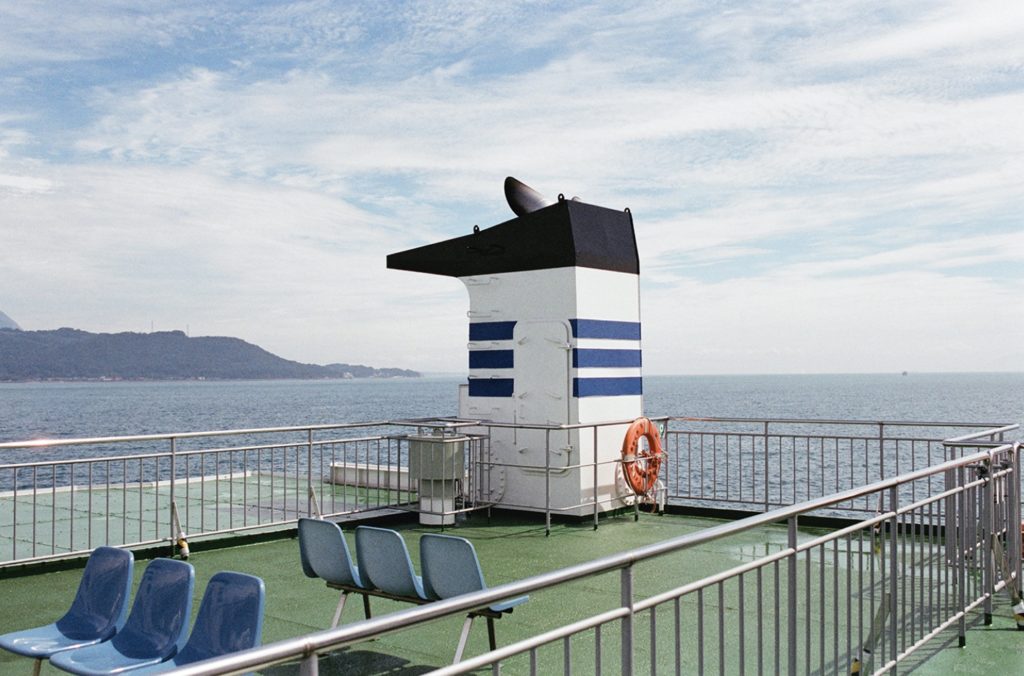
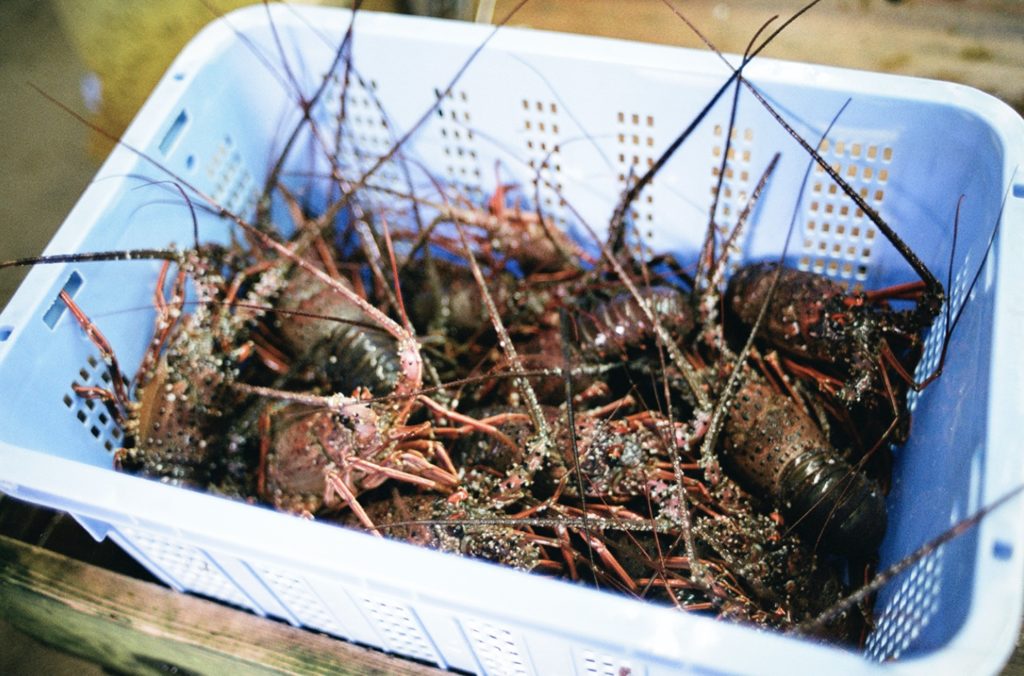
As we ascended the steep slopes, we wondered if we were really heading toward the fields run by Teruaki Baba. Convention says fields are built on vast expanses of flatland. Mr. Baba defied convention by practicing farming on odd patches of sloped land thickly covered with weeds.
“Cramped, slanted, crooked… I’m simply using the land in its original, natural state,” says Mr. Baba. “Zoned field systems make farming far more efficient, of course.”
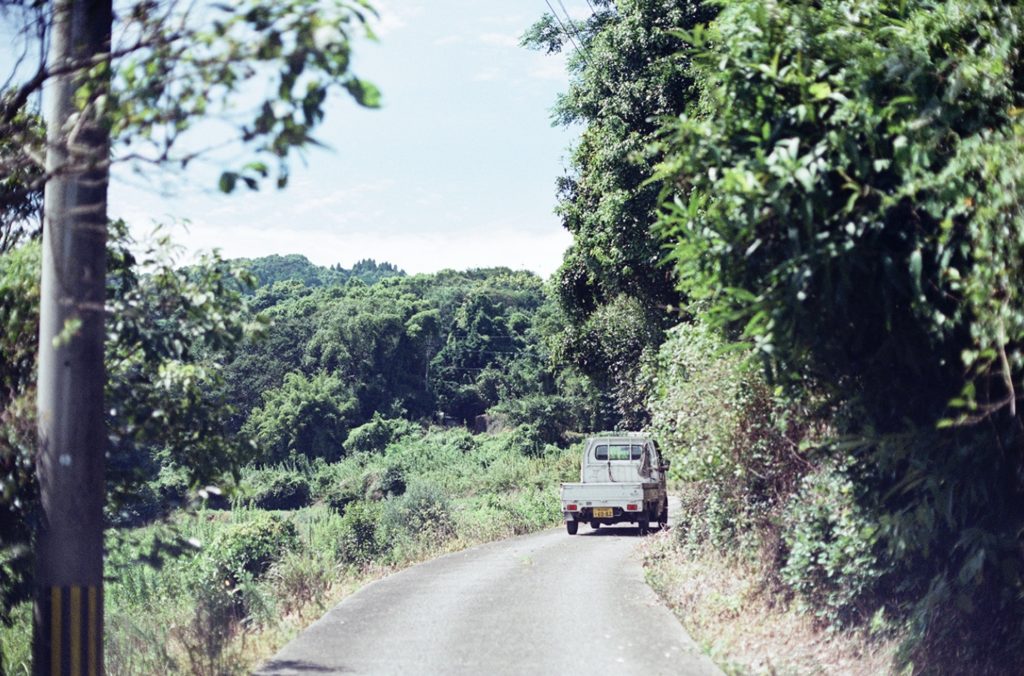
He grows a mix of crops as complex as the terrain: two varieties of kale, cucumber, and between them, komatsuna and radish. “I don’t want to waste the space in the middle,” he jokes while explaining his proprietary method of leaving no strip of land unplanted. Apart from making use of the narrow slopes, Mr. Baba has also re-evaluated the benefits of weeds. Several years ago, when nearly 90 percent of his potatoes were affected by a disease, Mr. Baba was inspired to introduce microorganisms and restore the soil’s bacterial balance. He saw that it had a great impact on the richness of the soil, and went on to establish other original organic farming techniques.
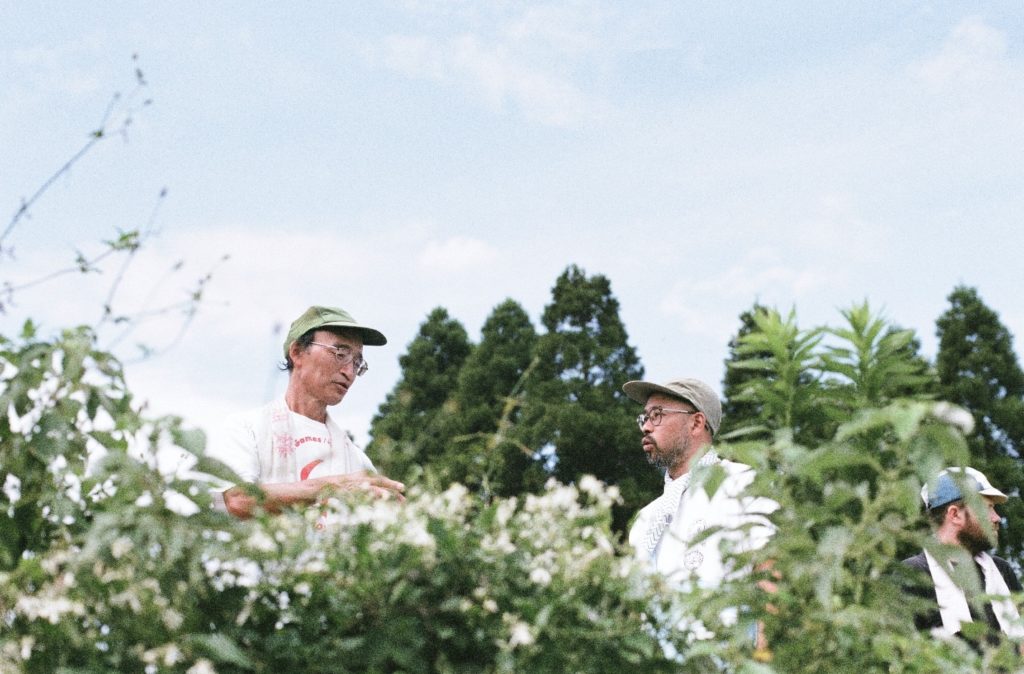
“Initially, I injected microorganisms and found that it improved the soil’s bacterial balance. As I kept experimenting, I came up against the question of why plants can grow in nature without any help from humans. This was over 30 years ago. In the end, the workings of nature became my master. Weeds grow in the wild and then die and cover the ground. After a while, the dead weeds are absorbed into the soil, where they are decomposed by microbiota. I realized I should follow this example and mimic nature’s cycle. I do some weeding, but I never remove it all. It’s important to let the weeds die and enter the soil. What I do is keep up the cycle and help the dead grass and roots do their job and maintain the soil. Fertilizer was invented by greedy humans seeking an ever larger harvest.”
Fertilizer is nowhere in Mr. Baba’s mind. He is interested only in making the best use of the weeds. His way may not be the most efficient way, but his produce is safe to eat even for people with chemical sensitivities or allergies. Our visit to the terraced field with a breathtaking view of the sea left us with our hands full of ultra-organic vegetables.
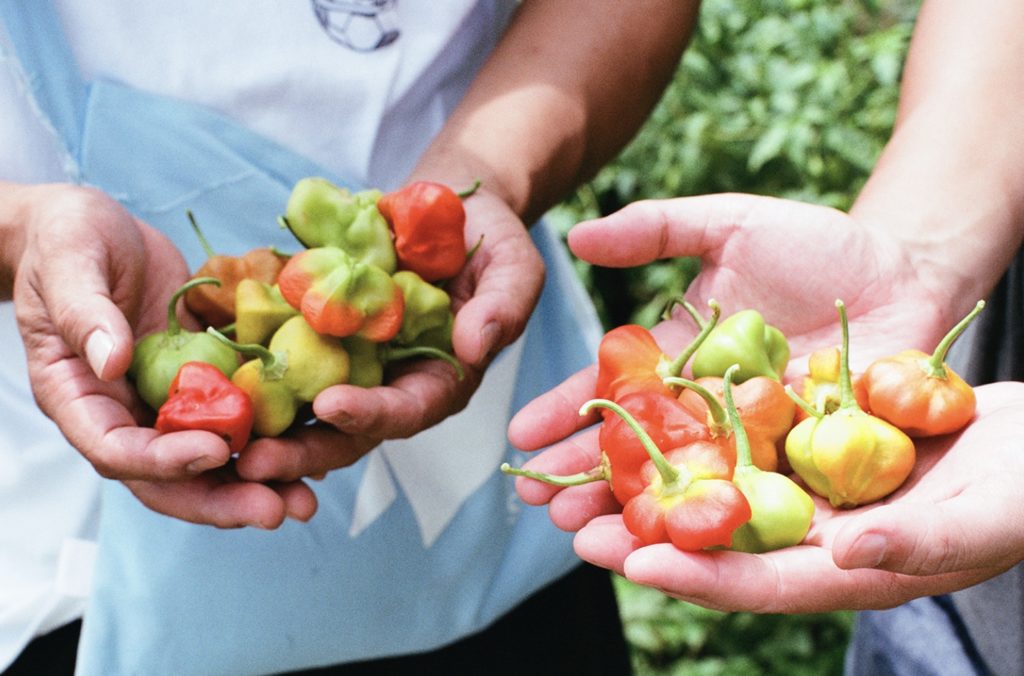
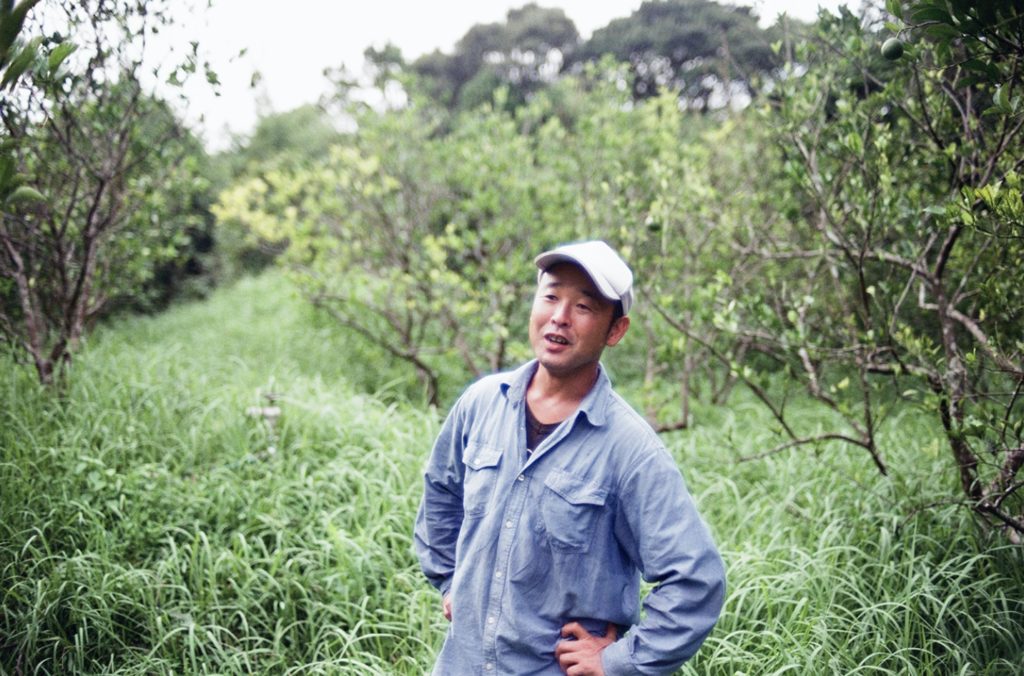
Still ruminating on Mr. Baba’s idea that human greed destroys nature’s cycle, we made our way to the western coast of Amakusa. In the summer of 1907, five rising young poets including Tekkan Yosano and Hakushu Kitahara explored this area on foot and wrote about their fascination for the stunning settlement by the sea. The community was enveloped by grapevines—as their travel journal Five Pairs of Shoes says, at the time, every family grew fruit trees in their garden and ensured they had enough to eat. The most common fruit grown was grapes, and the vines had become a symbol of the area. The number of vines declined with depopulation until eventually only one remained. A group of local volunteers then launched efforts to regain the fantastic view praised by the poets. The single grapevine slowly increased in number, and currently there are a dozen or so vines throughout the community. One of the volunteers, Yasukuni Shimizu, returned from Tokyo to his home district of Takahama to join the move to revive the grapevines:
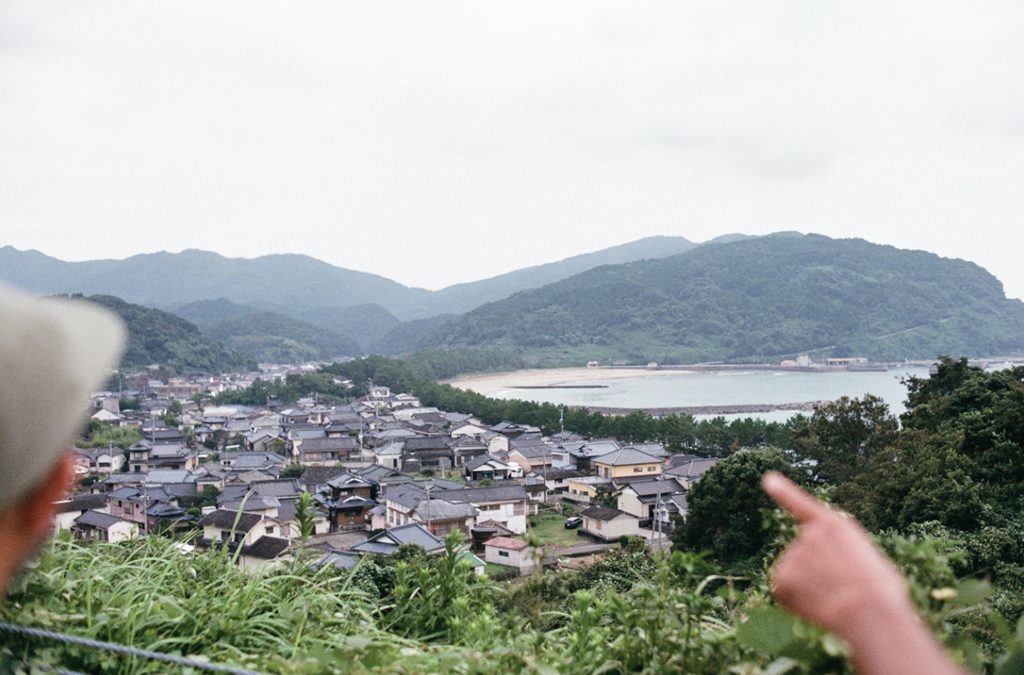
“Try stretching your imagination and picture bunches and bunches of grapes spreading out over every home. That used to be the norm around here. We champion the idea of reviving the grapevines as part of larger efforts to revitalize the community and attract as many new residents as possible. It’s exciting to think we might see the famous poetic view again.”
As he spoke, Mr. Shimizu handed us a local luxury bearing the label Takahama Wine. Glancing at the setting sun, we decided to call it a day and indulge in the product of the residents’ aspirations. We pictured the beautiful fishing community enveloped in grapevines over a century ago, listened to the sound of the waves in the background, and drank a toast to the beginning of a long, cozy evening.

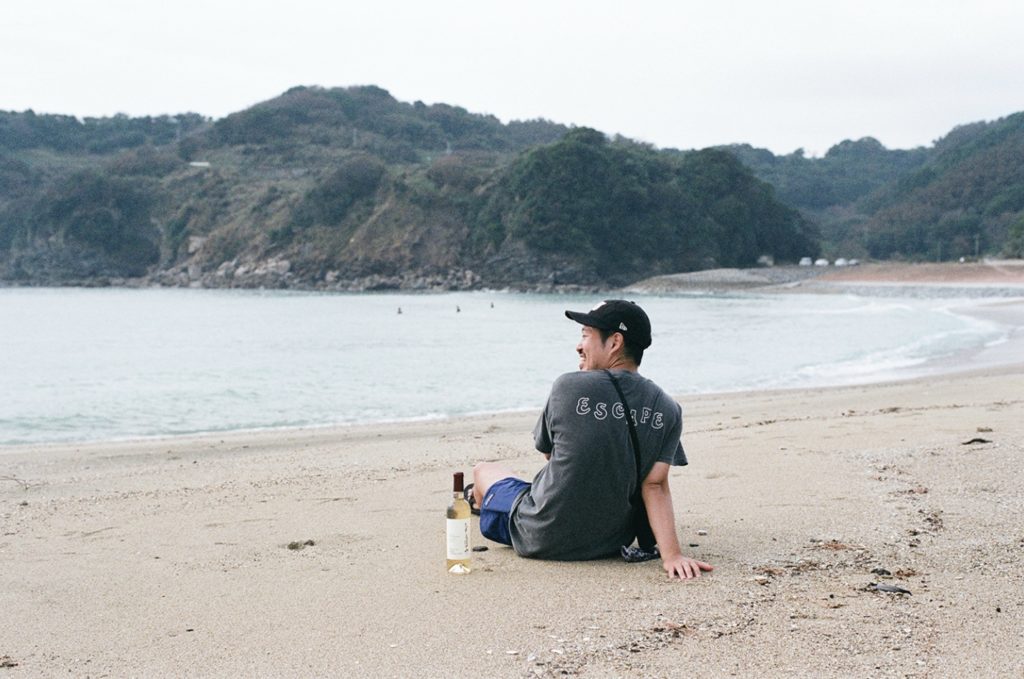
SPOT LIST
Maruki Fisheries
1237-6 Amakusamachishimodakita, Amakusa-shi, Kumamoto
Amakusa Terraced Fields Yumeyasai
3128-2 Itsuwamachifutae ,Amakusa-shi, Kumamoto
Fukuda Orchard
1355-2 Shiki, Amakusa-gun Reihokumachi, Kumamoto
Yoshinaga Bread Factory
1124 Ushibukamachi, Amakusa-shi, Kumamoto












